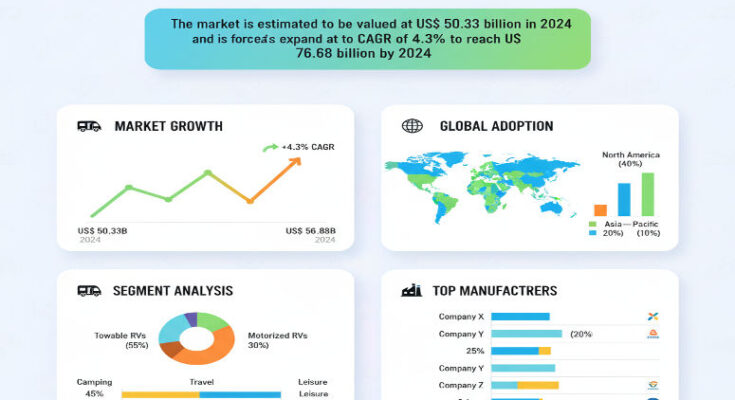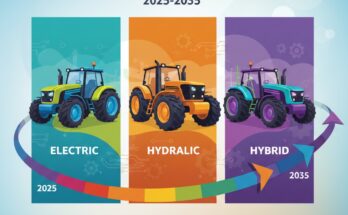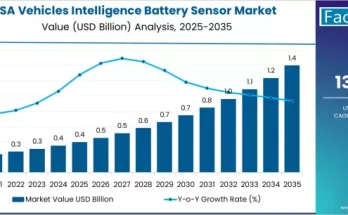The global Recreational Vehicle market is charting a course of steady expansion. In 2024, the market is estimated to be valued at US$ 50.33 billion, and it is forecast to grow at a compound annual growth rate (CAGR) of 4.3% through 2034, reaching approximately US$ 76.68 billion. The increasing preference for travel, adventure tourism, and mobile living—along with shifts toward electric RVs and lifestyle flexibility—are reshaping consumer expectations and driving growth across motorhomes, travel trailers, campers, and towable units.
Key Drivers of Growth
The headwinds supporting RV market growth are multifaceted. First, rising disposable income and increased interest in experiential travel—road trips, off-grid camping, and nature escapes—are pushing demand upward, particularly in North America and Europe. Second, shifts toward remote work, flexible lifestyles, and the rise in domestic tourism have encouraged more people to invest in RVs not just for vacations but as temporary homes or mobile workspaces. Third, environmental and sustainability trends are influencing design and propulsion: electric or hybrid RVs, solar tech, energy-efficient systems are becoming more common. Fourth, regulatory bodies are encouraging cleaner technologies, and infrastructure improvements (more campgrounds, better roads, charging networks) are reducing adoption barriers. Finally, manufacturers are responding with better comfort, connectivity, modularity, and customization options—improving user experience and resale appeal.
Segmentation & Regional Insights
-
Product Segments: The RV market divides broadly into motorized RVs (self-propelled) and towables (trailers, campers). Towable RVs continue to capture large shares in many mature markets due to lower initial cost, easier maintenance, and simpler ownership logistics. Motorized units appeal more in premium, luxury, or full-time living segments.
-
Regional Dynamics:
-
North America is the largest and most mature market. A strong RV culture, well-established dealer and service networks, camping infrastructure, and vast scenic spaces make RV ownership especially popular. It is expected to retain a significant share of the global market through 2034.
-
Europe shows steady growth, especially in regions with strong travel culture, scenic landscapes, and robust regulatory frameworks. Issues like road network compatibility, emissions zones, and local permit norms are increasingly important.
-
Asia-Pacific is emerging as a fast-growing region. Rising incomes, expanding middle classes, more domestic tourism, and interest in lifestyle mobility are creating new demand. Markets like China, India, South Korea, and Australia are showing increased adoption—but also face infrastructure, regulation, and cost barriers.
-
-
Propulsion & Technology Trends: A rising emphasis on electric and hybrid propulsion is notable, alongside increased incorporation of solar panels, lithium battery systems, smart connectivity, lightweight materials, and modular designs. Buyers increasingly expect built-in power management, off-grid capability, and comfort features (air-conditioning, improved insulation, entertainment systems).
Key Players in the RV Market
Some of the leading companies shaping the global RV market include:
-
Thor Industries, Inc.
-
Forest River Inc.
-
Winnebago Industries, Inc.
-
Trigano SA
-
Gulf Stream Coach, Inc.
-
REV Group, Inc.
-
The Swift Group
-
Pleasure-Way Industries Ltd.
-
Groupe Pilote
-
Jayco, Inc.
These players command large dealer and service networks, diverse product portfolios (motorhomes, towables, luxury vs. budget RVs), and increasingly, investment in electric or hybrid models and connectivity features.
Key Players Insights
Thor Industries, Inc. continues to lead, leveraging scale, acquisitions (including brands like Hymer and Jayco), and a strong North American presence. Its ability to offer both luxury motorhomes and more affordable towables gives it flexibility in economic cycles.
Forest River Inc. stands out for its wide model mix and strong dealer network; it benefits from both towable and motorized segments.
Winnebago Industries, Inc. is pushing the luxury, premium end—focusing on smarter designs, comfort, and technology integration. The company’s reputation in customer service and brand legacy helps maintain loyalty—but pricing and input cost pressures remain vulnerable.
Trigano SA and Groupe Pilote dominate in certain European markets, benefiting from regional preferences for smaller motorhomes and high finishing. Their European manufacturing bases give them advantages in meeting emission, dimension, and safety norms.
Smaller and niche players like Pleasure-Way Industries Ltd. focus on luxury conversion, bespoke interiors, and custom builds; Jayco maintains strong appeal in the towable/trailer segment with brand recognition and broad distribution.
The common thread among successful companies is adaptability—whether via embracing electrification, improving comfort and energy efficiency, expanding service networks, or offering modular and custom features.
Recent Trends & Market Developments
Recent years have seen several noteworthy shifts:
-
A gradual introduction of electric RVs and hybrid powertrains, especially for shorter, local travel. Battery technology improvements, solar power integration, and energy management systems are influencing design.
-
More RVs being purchased for extended stays or as mobile homes, prompted by remote work, housing shortages, and lifestyle shifts.
-
Increased use of smart technologies: IoT for monitoring vehicle systems, connectivity for entertainment and navigation, modular interiors, foldable or expandable living spaces.
-
Improved infrastructure: more campgrounds, RV parks, and charging/energy provisions, especially in under-served regions.
-
Rising focus on sustainability: lightweight materials, improved insulation, lower emissions, recyclable/eco-friendly components.
Challenges & Restraints
Despite strong tailwinds, a number of challenges could slow progress. High upfront costs remain significant, especially for motorized and luxury RVs. Interest rates, financing availability, and cost of raw materials (motors, batteries, chassis) influence pricing and margin. Infrastructure gaps—especially in emerging markets—reduce adoption (e.g. reliable roads, service centres, charging). Regulatory hurdles around emissions, road size restrictions, licensing, and vehicle safety standards vary widely by country and complicate cross-market designs. Finally, consumer perceptions about maintenance, resale value, insurance, and operating costs continue to influence purchase decisions.
Outlook & Strategic Takeaways
Over the next decade, the RV market is set for steady to moderate growth. Key areas to watch:
-
Electric and hybrid RVs: as battery tech improves and charging networks expand, these will transition from niche to more mainstream.
-
Customization and modularity: customers increasingly want personalization—interior options, expansion modules, off-grid or luxury features.
-
Service and after-sales networks: strong dealer support, parts availability, warranties will differentiate brands.
-
Focus on towables vs motorized mix based on regional cost, infrastructure, and regulatory environment. Towables may dominate where costs or regulation make motorhomes harder.
-
Emerging markets as growth zones—Asia-Pacific, Latin America, Middle East—provided infrastructure and financing improve.
Browse Full Report: https://www.factmr.com/report/recreational-vehicle-market
Editorial Perspective
The Recreational Vehicle market is more than just rolling homes—it’s a reflection of shifting values: freedom, mobility, and experience over location, with increased respect for sustainability and practicality. Brands that anticipate the confluence of environmental regulation, consumer mobility desire, and technological possibility will thrive. Those lagging in electrification, service support, or flexibility risk losing relevance in a marketplace increasingly oriented around lifestyle as much as vehicle.



